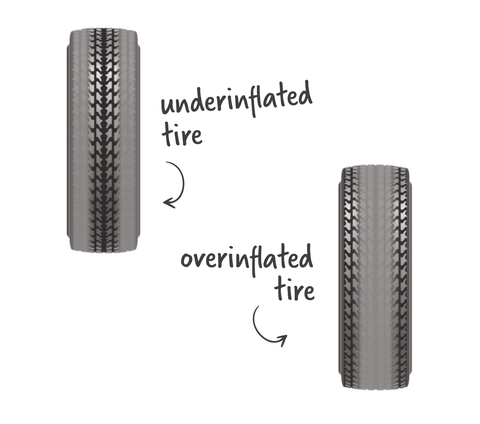Are your tires still good?

Tire wear depends on many factors: weather conditions, road conditions, your type of driving and the brand of your tires. Usually between 4-5 years of use, tires must be replaced.
How to check the condition of your tires?
Our friend Oliver explains here how to check the wear of your tires.
1. The Quarter Test
Quick and efficient, the moose marker allows you to check the condition of your tires. Simply take a quarter and insert it between two grooves in the bottom of the tire, making sure that the nose of the moose is facing down.
- If the moose nose disappears, your tires are still good for the winter 😉
- If the nose is visible, you should absolutely change your tires for your own safety. The thickness is less than 6/32. ❌

Credit: Protégez-vous
For winter only
Some brands offer a wear scale in percentage, numbers or with an icon (manufacturer logo as Michelin with Bibendum, a snowflake or a tread wear indicator). On the central part engraved on the tire, it indicates the remaining depth on the tread. Over time when you drive on it, the numbers will fade, which means you need to change your tires. So you can quickly know what condition your tires are in.

Credit: blogpneu.com


⚠️ Riding on a worn-out tire can lead to an increased risk of flat tires or aquaplaning.
2. Tire Tread Depth Gauge
This measuring tool allows you to accurately measure the exact depth of the tire tread. You can buy it in any specialized store.
3. Is the wear equal?
- If the wear is at the extremities of the tread, your tires are underinflated.
- If the wear is in the center of the tread, your tires are overinflated.

To avoid this type of problem, it's important to check your tire pressure regularly. The optimum pressure for your car is indicated in the owner's manual or on the driver's door.
And Teddy gives you more information on when you should replace your tires here!
Remember, you can always consult an expert in a workshop to help you if you have questions or need help!
